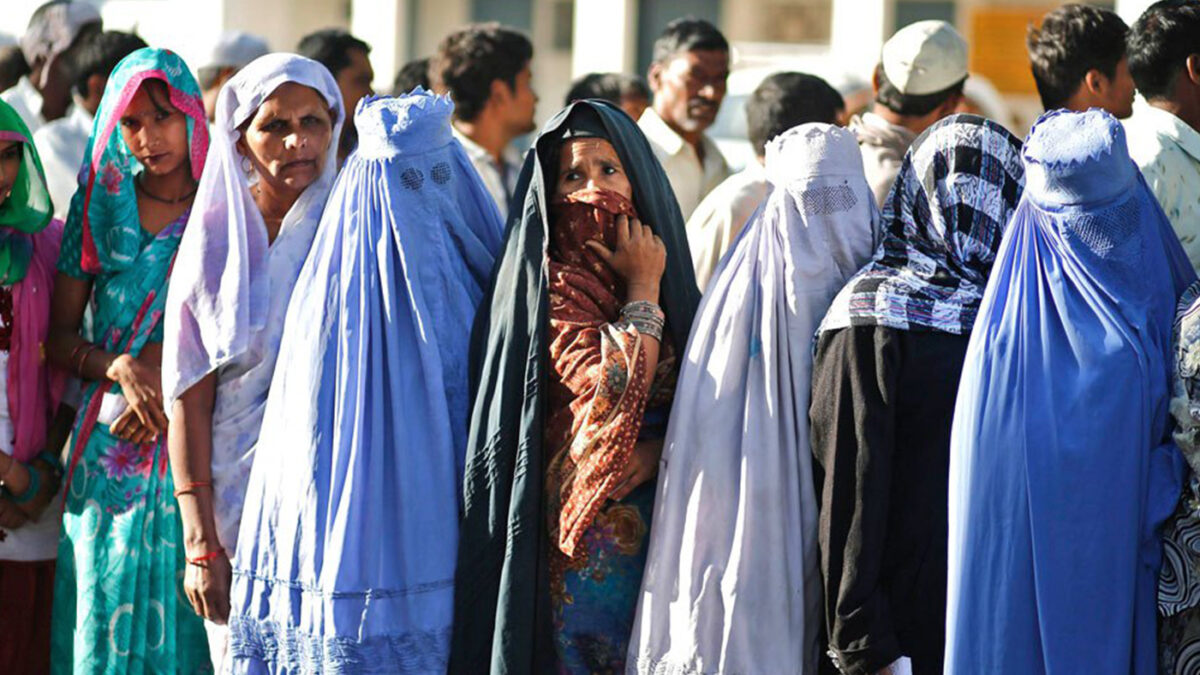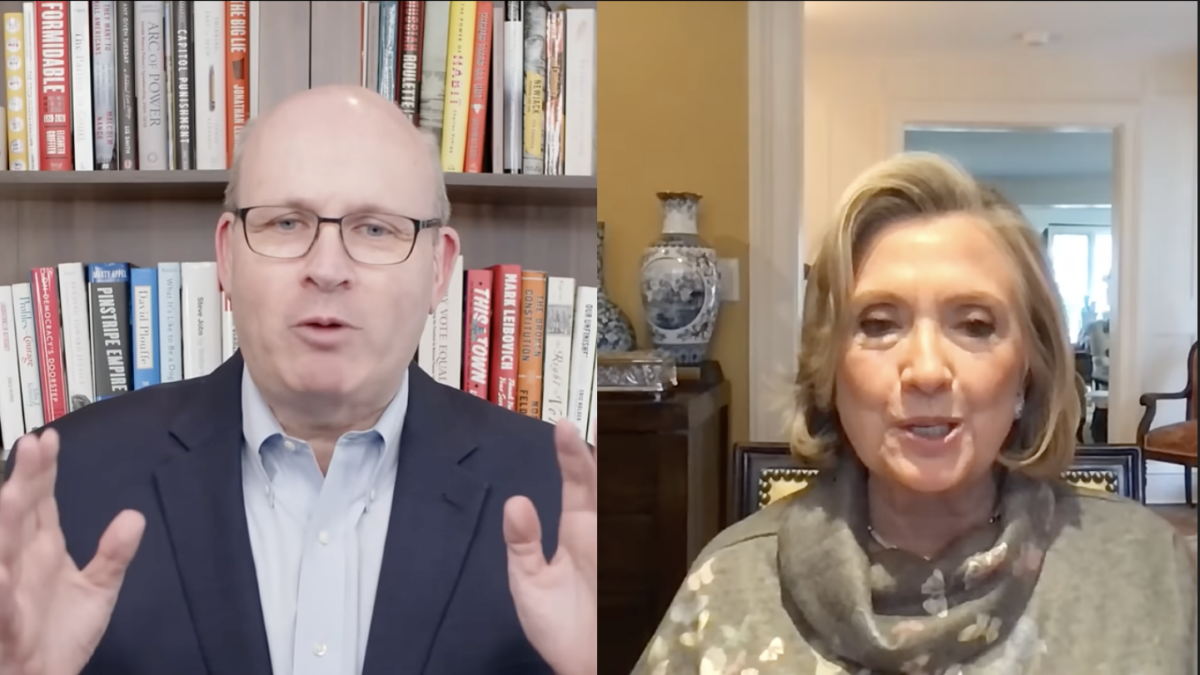Shireen Qudosi is a longtime Muslim reformer, writer, and speaker on faith, identity, and belonging whose new book shows she has decided on a very bold reform project indeed: altering Islam into an essentially feminine religion.
The subtitle of Qudosi’s “The Song of the Human Heart: Dawn of the Dark Feminine in Islam” contains what appears at first as a contradiction: a dawn of the dark. This is a contradiction in the Hegelian sense, not evidence of an error in logic but of a challenge that has to be transcended to attain a higher level of understanding. Readers will find many of these challenges, such as being invited to “ascend” into “the depths,” as Qudosi brings Islam under the lens of a host of narrative modes of interpretation, from Jungian psychology to magic mushrooms. Yet the basic project is itself a contradiction of this sort: how to find the sacred feminine in Islam, that heroic, epic religion whose most famous advocates have always been males and warriors.
A cynical reading of this project might begin by noticing its similarity to works such as the recent autobiography by Prince Harry, who likewise sought the divine in what reviewer Dominic Green described as “seek[ing] enlightenment like a typical millennial: via drugs and meditation.” Yet there is a history particular to Islam of attempting to reinterpret and engage the faith through the direct personal experience of God. This approach gave rise to Sufi Islam, which in the 12th century remade Islamic thought in its image in the way that Qudosi would like to do today.
That transformation is mourned by many philosophers, as its success brought an end to an illustrious tradition of Aristotelian philosophy within Islam that is of far greater importance to even the Western world than is widely understood. Nevertheless, it provided a substantial change in the nature of the high culture of the Islamic world at the time. Such transformations are possible, perhaps now as then.
In any case, this is a work that is essentially different from any similar work by a Christian thinker because it is impossible to produce it without a demonstrable virtue: the virtue of courage. Neither Prince Harry nor any similar thinker runs any hazard with their writings: Qudosi is courting death by name.
For example, early on in the book Qudosi explains that she has since childhood felt called to be a witch, and she explores Islamic theological resistance to the magic of feminine power as a kind of curse upon humankind. Embracing witchcraft by itself is the sort of thing that fundamentalists might punish with death. While that is true in Christianity and Judaism’s scripture as well — Exodus 22:18 holds that you “shall not suffer a witch to live” — there are even existing states like Iran that would carry out such a punishment in the Islamic world, and terrorist groups that might go abroad doing so.
Likewise with Qudosi’s embrace of the pre-Islamic pagan goddesses mentioned in Islam’s so-called “Satanic Verses.” Muslims believe the Koran was delivered directly to Muhammad by the Archangel Gabriel, but a few verses that appear to endorse three pagan goddesses of Muhammad’s era were supposed to have been slipped in by Satan in angelic disguise. To call for an embrace of these goddesses as a way of restoring Islam’s feminine soul is a challenge that fundamentalists might well consider blasphemy worthy of death. Whatever one thinks of witchcraft, writing and publishing a book like this is a demonstration of substantial courage.
Courage is also on display by many of the women she invokes and plainly considers allies in the struggle, especially those women protesting against the Islamic Republic of Iran. In a sequence on scissors as a symbol of feminine power, Qudosi describes the way in which women in Iran were posing with scissors and their recently shorn hair. The book speaks for them, for their rage, and for their vulnerability. Though the latter is often considered a negative, Qudosi describes vulnerability as a source of great strength for those who are willing to embrace it.
Vulnerability as a Source of Power
That leads to a philosophical question about the book that may prove a source of additional controversy. To speak about the “divine feminine,” let alone the “dark feminine” powers of rage and destruction, there is, of course, a need to be able to speak about the feminine. There is a long Western philosophical tradition — definitely to include Islamic philosophy — that followed Aristotle in associating the male with the active “agent,” and the female with the passive or receptive “patient.”
Qudosi’s thoughts on vulnerability as a source of potential power fit with this tradition in a surprising but defensible way; the problem is that there has been a sharp rejection of Aristotle’s model, especially by Western feminist thinkers. Indeed, there is a standing challenge to the idea that “masculine” and “feminine” are distinct modes, rather than located on some sort of spectrum; at the extreme, some reject the idea that they really mean anything at all.
Qudosi is asserting that the feminine is not only real but in fact has metaphysical stature. In a sense, the divine or dark feminine is more real than we are. This is because they pertain to a higher level of reality in the way that Platonic “forms” were supposed to be of a higher level of reality than the things encountered in ordinary life.
In “The Republic,” Plato gives a famous example called “the allegory of the Cave,” in which people spend their lives chained to seats in a cave and watch a play of shadows on the wall in front of them. Since that is all they ever know, they never realize that the shadows are really being produced by creatures outside the cave that are more real than the shadows — “the forms,” in this model. These forms have a higher sort of reality than their shadows, which are only poor imitations of them.
Not only Plato has had this idea. There is an allied metaphor in St. Paul’s letter to the Corinthians, in which what we are able to know of the world is “seen through a glass, darkly,” unlike the knowledge that we will have of reality in the afterlife. What Qudosi is saying is that the feminine aspect is part of this more-real world, and its expression within human beings is like a shadow of what the real thing is actually like.
It would be ironic if Qudosi ended up facing feminist thinkers over the point, as her model is also strongly feminist in the sense of representing a devotion to the inclusion of and equality for women. It would be strange to take heat from feminism for pursuing the interests of the women of Iran who have cut off their braids, for example. Perhaps Qudosi and the feminists will find a modus vivendi here; yet also perhaps not. The idea that there is an essentially feminine quality is going to be a problem for many thinkers in that tradition, which has rejected essentialism as just another box to put women in. This is an area where more exploration and engagement would be welcome both from Qudosi and from feminists writing in their larger philosophical tradition.
Areas for Exploration
Another area of potential development might be the areas of the divine feminine beyond the dark feminine, as a dark feminine implies a light side as well. Many of these qualities could be positives that Islamic culture could also usefully find ways to explore, endorse, or embrace. Perhaps that has to wait until the rage Qudosi speaks of — for example, among the women of Iran suffering from many wrongs — has been quelled by change. A flowering, perhaps, after the storm.
There is also room to explore whether Qudosi’s model is a religious or a psychological one. Qudosi intends much of her talk of things like “the Shadow,” a darker part of the personality, to be understood in a Jungian psychological sense, but she is sometimes speaking of religion rather than psychology.
The difference is again a matter of the metaphysical stature of her ideas: Are we to understand that these three pagan goddesses mentioned by Muhammad are actual beings in their own right, or perhaps ideas in the mind of God (as Platonists sometimes put it, but as has also been attractive to monotheistic thinkers from all three of the Abrahamic faiths)? Or are they simply psychological concepts that many people have in common, and thus a function of the human mind similarly experienced by different persons simply because our brain structure is basically similar?
Some of these areas of additional exploration may supervene upon the difference in methodology between her approach and other approaches. Her approach is more like Sufi Islam than it is like the analytic philosophical tradition of Islam. It may likewise be difficult for analytic philosophers in the contemporary feminist tradition to find a methodology that would support a common inquiry into these questions. If she is successful in finding such relationships, the conversation would be of benefit to both groups.
It will be more difficult for Qudosi to have a useful conversation with orthodox thinkers in the Islamic tradition. She has set up a position that is a defiant challenge to many of their most basic and cherished ideas. It may be hard for them to meet her halfway, let alone to come within the shelter of her tent.
It is to be hoped she is successful in finding outlying figures who may be willing to speak with her, but insofar as the orthodox acknowledge her at all, the response is unlikely to be kind.









